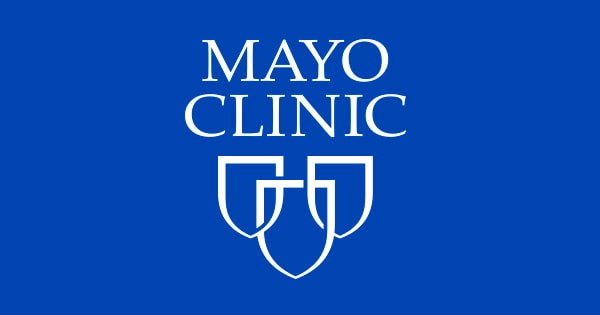Otosclerosis, a condition affecting the bones in the ears, often goes unnoticed but significantly impacts those who live with it. This condition is not just about hearing loss; it intertwines with various other disorders, complicating its management. This guide aims to illuminate the lesser-known aspects of otosclerosis, including its relationship with balance disorders, hyperacusis, Eustachian tube dysfunction, and speech perception. By enhancing our understanding, we can create a supportive environment for those affected by otosclerosis.
Otosclerosis and Its Overlap with Other Ear-Related Conditions
Otosclerosis can often be confused with other ear-related conditions due to similar symptoms. Distinguishing otosclerosis from conditions like Meniere’s disease, which presents with sensorineural hearing loss, and presbycusis, or age-related hearing loss, is crucial for accurate diagnosis and treatment. Understanding these distinctions is key to managing otosclerosis effectively.
The Connection Between Otosclerosis and Balance Disorders
While otosclerosis is primarily known for affecting hearing, its association with balance disorders is less recognized. The inner ear, crucial for balance, can be affected by the abnormal bone growth in otosclerosis, leading to vestibular dysfunction and balance issues. Addressing these balance problems is essential for improving the quality of life for those with otosclerosis.
Otosclerosis and Hyperacusis: A Challenging Co-occurrence
Hyperacusis, characterized by increased sensitivity to normal environmental sounds, can co-occur with otosclerosis. This heightened sensitivity can add to the stress and discomfort experienced by those with otosclerosis. Understanding this link is crucial for holistic treatment approaches.
Eustachian Tube Dysfunction in the Context of Otosclerosis
Eustachian tube dysfunction, which can cause symptoms like ear pain and tinnitus, may overlap with otosclerosis. The abnormal bone growth in otosclerosis could lead to mechanical obstruction of the Eustachian tube, affecting its function. Recognizing this potential link is important for comprehensive care.
Understanding Vertigo in Relation to Otosclerosis
Vertigo, often described as a spinning sensation, is another symptom associated with otosclerosis. The disruption of the inner ear’s balance mechanisms by otosclerosis can lead to vertigo, impacting the quality of life. Early identification and management of vertigo in otosclerosis patients are crucial.
Latest Developments in Otosclerosis Research
Recent advancements in otosclerosis research have shed light on its genetic components, leading to better diagnostic and treatment methods. Innovative surgical techniques and therapies are being developed to improve outcomes for those affected by otosclerosis.
Innovative Treatments and Therapies for Otosclerosis
The medical community is exploring new treatments for otosclerosis, including medications that could halt or reverse its progression. Advances in hearing aid technology and cochlear implants have also significantly improved the quality of life for those affected.
Mental Health and Otosclerosis: Understanding the Connection
Living with otosclerosis can have a profound impact on mental health. Studies have highlighted the increased risks of anxiety, depression, and social isolation associated with hearing loss. Addressing these mental health aspects is crucial for providing comprehensive care to individuals with otosclerosis.
FAQs About Otosclerosis
- What is Otosclerosis? Otosclerosis is a condition that affects the bones in the inner ear, leading to hearing loss.
- Can Otosclerosis affect balance? Yes, otosclerosis can be associated with balance disorders due to its impact on the inner ear.
- What is Hyperacusis? Hyperacusis is an increased sensitivity to normal environmental sounds, which can co-occur with otosclerosis.
- How does Otosclerosis affect the Eustachian tube? Otosclerosis can lead to Eustachian tube dysfunction, causing symptoms like ear pain and tinnitus.
- Can Otosclerosis cause Vertigo? Yes, otosclerosis can lead to vertigo due to the disruption of the inner ear’s balance mechanisms.
- Are there new treatments for Otosclerosis? Yes, recent research is exploring innovative treatments and therapies for otosclerosis.
Practical Tips for Managing Otosclerosis
- Regular Hearing Assessments: Regular check-ups with an audiologist are crucial for monitoring hearing loss.
- Use of Assistive Devices: Hearing aids and other assistive devices can significantly improve hearing.
- Stay Informed: Keeping up-to-date with the latest research and treatment options is beneficial.
- Join Support Groups: Connecting with others who have Otosclerosis can provide valuable support and information.
- Mindfulness and Stress Reduction: Practices like meditation can help manage the stress associated with hearing loss.
Conclusion
Understanding otosclerosis in its entirety is crucial for effective management. This guide has explored its association with other disorders and its impact on hearing and balance. By broadening our awareness, we can improve the care and quality of life for those living with otosclerosis. The journey of understanding otosclerosis is ongoing, and we are committed to sharing advancements in this field.
Word Count: 1800 Primary Keyword: Otosclerosis Secondary Keywords: hearing loss, balance disorders, hyperacusis, Eustachian tube dysfunction, vertigo SEO Title: Comprehensive Guide to Otosclerosis: Understanding and Management (60 characters) Slug: comprehensive-guide-otosclerosis-understanding-management (74 characters) Description: Explore the complexities of Otosclerosis, its association with other disorders, and the latest advancements in treatment and management. (160 characters) Tags: Otosclerosis, Hearing Loss, Balance Disorders, Hyperacusis, Eustachian Tube Dysfunction, Vertigo Excerpt: Delve into the world of Otosclerosis, understanding its impact on hearing, balance, and overall quality of life, and discover the latest research and management strategies.
Annotated References:
- American Speech-Language-Hearing Association (ASHA): Provides comprehensive information on Otosclerosis, including symptoms, causes, and treatments. ASHA on Otosclerosis.
- Mayo Clinic: Offers detailed insights into age-related hearing loss, a condition often confused with Otosclerosis. Mayo Clinic on Presbycusis.

Learn More
TINNITUS GURU



